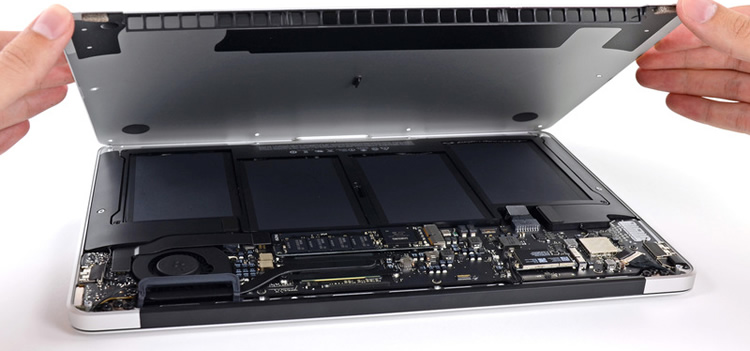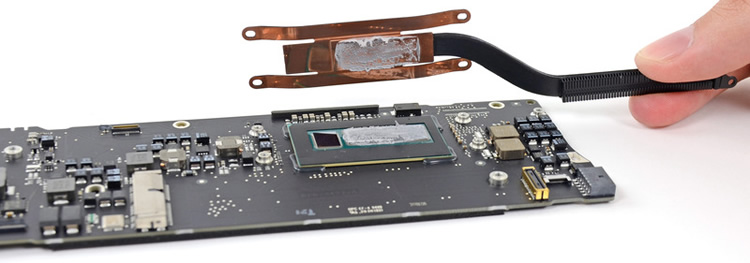On the outside, Apple's newly-released Macbook Air is essentially indistinguishable from previous iterations; even the model number is the same (A1466). Its familiar exterior though belies a number of tweaks and changes, much of which are exposed by iFixit's compulsory teardown.

Apple's latest addition to its thinnest family of laptops touts subtle improvements -- improved battery life, microphone noise cancellation, 802.11ac Wi-Fi, faster graphics and larger storage options. As a result, the innards have changed a bit to accommodate the upgrades. However, many items remain the same though, like the pentalobe driver you'll need to open up the belly of your Macbook Air and its non-upgradable RAM which ship in both 4GB or 8GB capacities.
An upgrade to Intel's Haswell is responsible for some of the recent improvements, namely better power efficiency and faster graphics. Once the heatsink is off, explorers will find both the GPU and CPU dies located on the same package. Given the notebook's tiny size and minimal capacity for cooling, the Air has never featured a discrete GPU; however, it still gets a significant graphics boost thanks to Haswell's Intel HD 5000 IGP.

Although a fourth-gen Intel SoC is part of Apple's formula for achieving an impressive 12-hour battery life, the other contributing factor is a physically larger battery: the device is stuffed with a 7.6V, 7150mAh pack. By comparison, its predecessor contained a 7.3V, 6700mAh part.
Additionally, iFixit found a totally redesigned Wi-Fi (I.e. Airport) card by Broadcom and Skyworks which features 802.11a/b/g/n/ac connectivity. And despite their rivalry, Samsung still managed to find its way into Apple's newest Macbook as the company manufactures the flash chips used in its mini PCI-e-based SSD.
"Reparability" is a metric by which iFixit rates the ease of servicing different gadgets. Overall, iFixit issued the mid-2013 Macbook Air a score reparability of 4/10 -- a total which is marred by pentalobe screws and poor upgradeability due to a proprietary SSD and memory soldered to the motherboard.